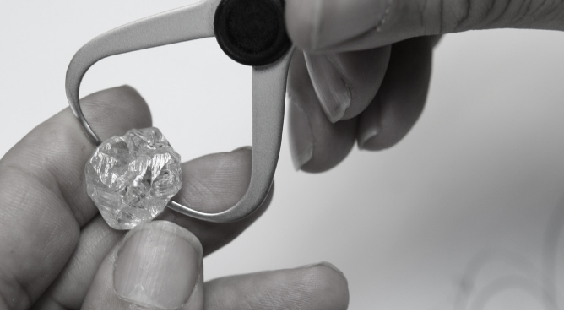Learn about the rough diamond's fascinating formation and manufacturing process together with estimation yield and pricing.
The word "Rough" means "Raw Diamond" which has not yet been cut. Generally, the word sorting is applied to rough diamond. Here the goods are divided into groups having similar characteristics. The assorter needs to have a more intimate knowledge of diamonds. The person undergoing training will have fairly good knowledge on rough diamond assortment with its manufacturing procedure.


"It was an excellent experience to learn about rough diamonds from IIG.It was great pleasure to learn about rough diamonds from an expert like Bimal Sir. His teaching methods were excellent with a vast market knowledge. I would recommened IIG to anyone who wants to learn about rough diamonds."

"I wanted to gain knowledge and experience of rough diamonds. I enrolled into IIG for their RDG course. The course has an extensive reach for people willing to learn about the rough diamonds which are mined for their shine and lustre. The course at IIG is expansive and I recommend this course to anyone willing to learn about rough diamonds."

"I wanted to gain knowledge and experience of rough diamonds. I enrolled into IIG for their RDG course. The course has an extensive reach for people willing to learn about the rough diamonds which are mined for their shine and lustre. The course at IIG is expansive and I recommend this course to anyone willing to learn about rough diamonds."
Raw or uncut diamonds do not glitter like the cut ones because the light that goes inside the diamond is not properly reflected.
The most common shape for rough gem quality diamond is the octahedron, which looks like two pyramids back to back. Crystals that are almost perfect in shape and transparency are called glassies.
No, Masters In Diamonds is the combination program of Rough Diamond Graduate and Diamond Graduate (Polished), so it is automatically included, No need to opt for RDG separately
Diamonds are known to be carried to the earth's surface with magma in only three rare types of magmas: kimberlite, lamproite, and lamprophyre. Of the three types, kimberlites are by far the most important, with several hundred diamondiferous kimberlites known.
Interested in one of our courses at IIG? Book a consultation